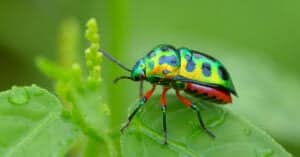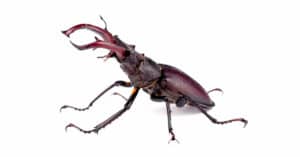The term dung beetle refers to numerous species in the superfamily Scarabaeoidea. Most dung beetles belong to the subfamilies Aphodiinae and Scarabaeinae, the latter of which are often called true dung beetles. You can find them throughout the world, except Antarctica, in habitats ranging from deserts to farmlands to forests. Dung beetles feature prominently in historical mythology and also serve an important ecological function. Let’s explore 10 incredible dung beetle facts and discuss what makes dung beetles so interesting.
10. Dung Beetles Eat Poop
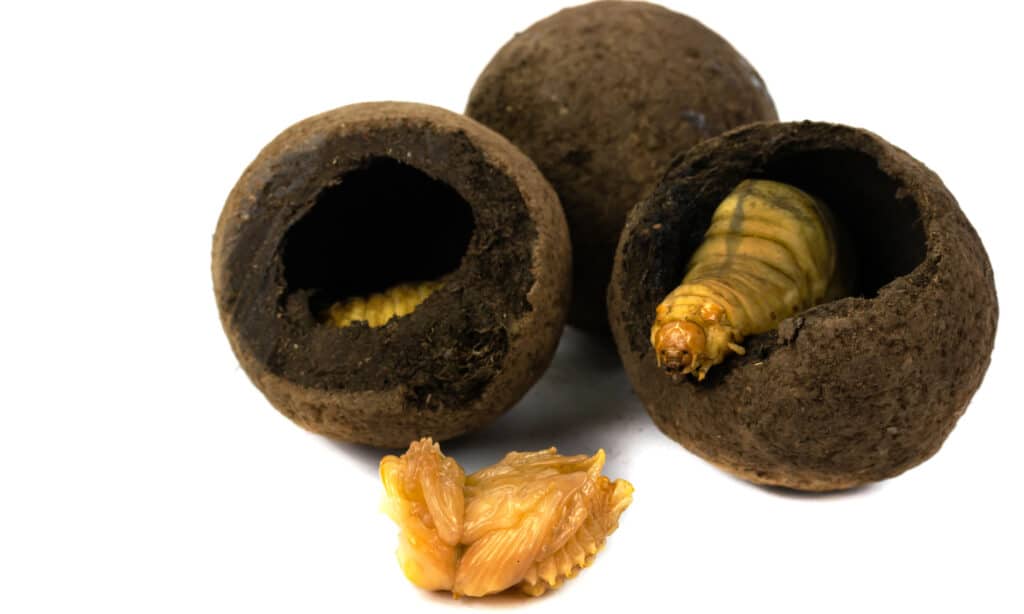
Dung beetles eat the feces of different animals.
©Sakdinon Kadchiangsaen/Shutterstock.com
When most people think about dung beetles, they automatically think about the dung beetle’s diet. While dung beetles come in a variety of shapes, sizes, colors and behaviors, the one thing they all have in common is their relationship to feces. As their name implies, dung beetles eat the poop of different animals.
Dung beetles primarily eat the feces of herbivores and omnivores but prefer the feces of omnivores. That said, they will also eat other foods, including mushrooms and decaying plant matter. Dung beetles technically don’t need to eat or drink any other foods, as the dung meets all their nutritional needs.
9. There Are 3 Different Types of Dung Beetles
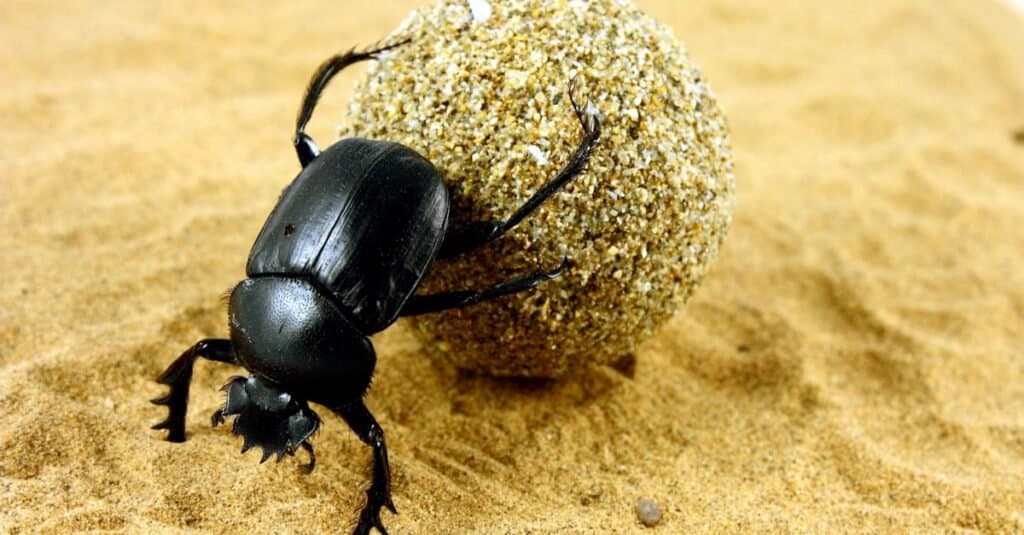
Beetle pushing its ball of dung in the sand.
©efendy/Shutterstock.com
Generally speaking, dung beetles fall into one of three different broad categories – rollers, tunnelers and dwellers. Rollers roll dung into round balls, which they then push to their dens, which is how they get their name. Tunnelers dig tunnels under or next to where they find dung, thereby giving them easy access to their food source. Meanwhile, dwellers burrow directly into dung that they find and live inside the feces.
Some researchers contend that there exists a fourth category of dung beetle – stealers. These dung beetles steal poop from other dung beetles. That said, these dung beetles often roll their stolen poop back to their dens, so they may fall into the roller category.
8. Dung Beetles Are Super Strong
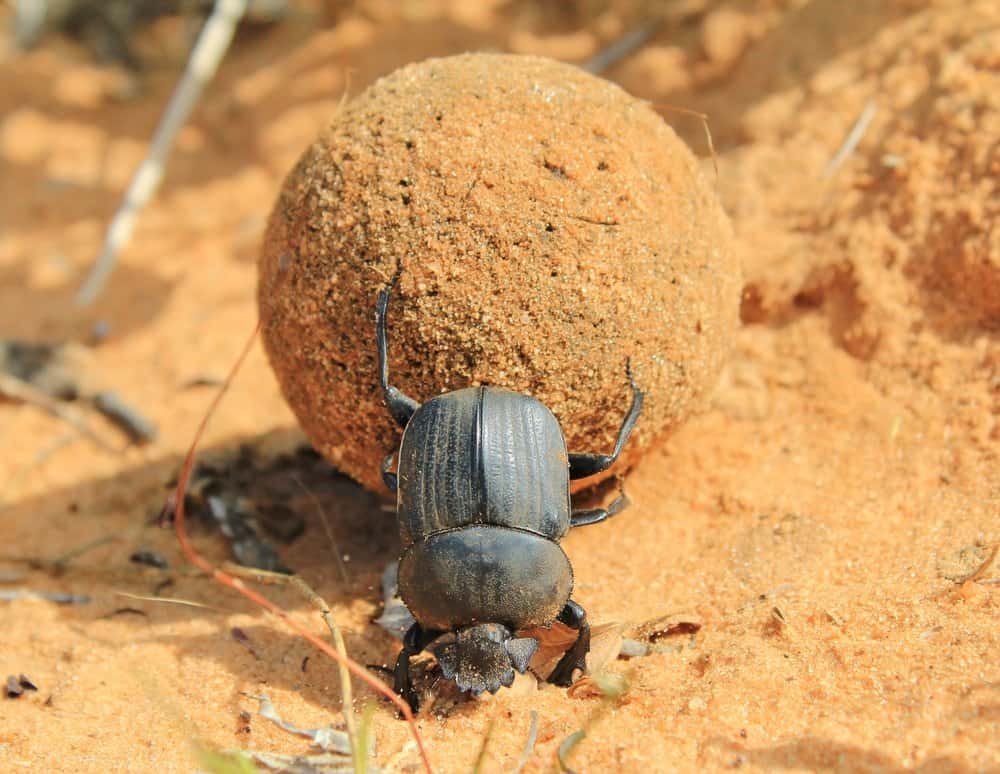
One dung beetle species can move objects nearly 1,141 times its own weight.
©Stacey Ann Alberts/Shutterstock.com
There are several insect species that are reputed to possess enormous strength. For example, leafcutter ants can carry nearly 50 times their own weight. Meanwhile, the average dung beetle can easily roll 10 times its body weight. However, one particular dung beetle puts all other insects to shame with its feats of strength.
Male Onthophagus taurus dung beetles can move objects up to 1,141 times their own body weight. This is roughly the equivalent of a person carrying over 80 tons or six double-decker buses. Given its incredible power, the humble dung beetle holds the distinction of being the strongest pound-for-pound animal on earth.
7. Ancient Egyptians Revered Dung Beetles

Egyptians revered scarabs as sacred.
©Mike Laptev/Shutterstock.com
While many people today consider dung beetles gross or distasteful, some ancient cultures viewed dung beetles in a different light. Ancient Egyptians revered several species of dung beetles or scarabs. Most notably, the species Scarabaeus sacer, or the sacred scarab, was given sacred status by Egyptians, hence its name.
Egyptians associated dung beetles with the god Khepri, the god of the rising sun. Egyptians compared dung beetles rolling dung to the movement of the sun across the sky. They also believed that only male dung beetles existed and that they reproduced by depositing their sperm into dung balls. Similarly, Khepri created himself out of nothing, further associating dung beetles with the iconic Egyptian god.
6. Some Dung Beetles Use Stars to Navigate

Some species orient themselves using the stars or the moon’s polarization pattern.
©Charles J. Sharp, CC BY-SA 3.0, via Wikimedia Commons – License
Humans have used the stars to navigate for thousands of years, but we’re not the only animals that rely on celestial objects for navigation. Seals, moths and indigo buntings all use stars for orientation in some way. One of the more surprising dung beetle facts is that they also use the night sky to navigate. Dung beetles possess superposition compound eyes and excellent night vision. They use their eyes to great advantage when surveying the night sky.
The African Scarabaeus zambesianus navigates by moonlight, specifically by checking the moon’s polarization pattern. No other animal known to science navigates this way. Similarly, several dung beetle species can navigate according to clusters of stars in the Milky Way, a trait unique among insects.
5. Dung Beetles Are Great Parents
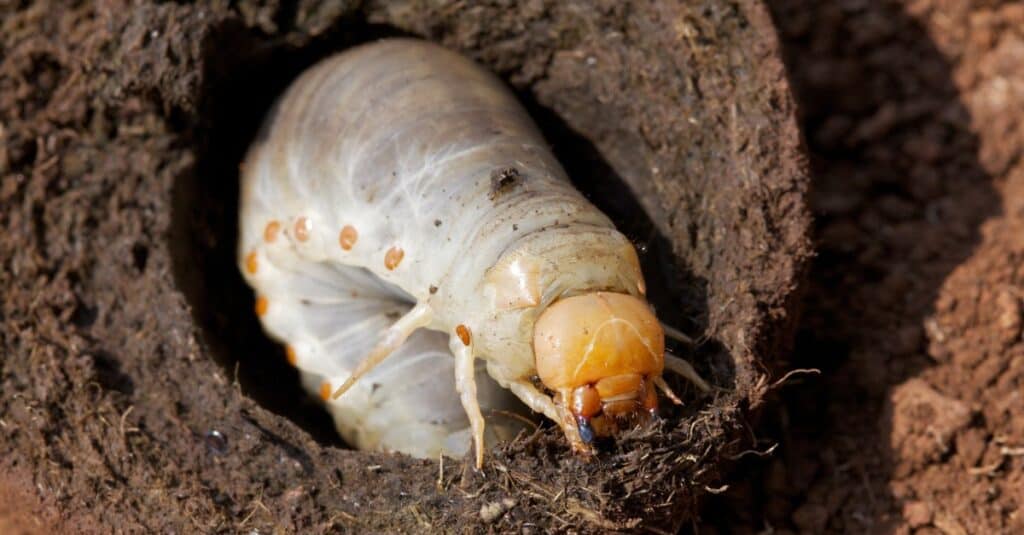
Dung beetles take great care of their children.
©Jan Mastnik/Shutterstock.com
By and large, insects aren’t known for their parenting skills. Most insect parents put little to no effort into raising their offspring once they are born. Moreover, many are downright terrible parents and either abandon or actively try to eat their children. However, dung beetles serve as the exception to this otherwise hard-fast rule.
Numerous dung beetle species put a tremendous amount of effort into caring for their young. Male dung beetles search far and wide for poop that they will roll back to the den for their offspring to eat. Meanwhile, female dung beetles both find food and prepare the nest for the young. Some dung beetle species in the Onthophagus genus even mate for life, while in others, both males and females work together to construct a nest.
4. Dung Beetles Date Back to the Cretaceous Period
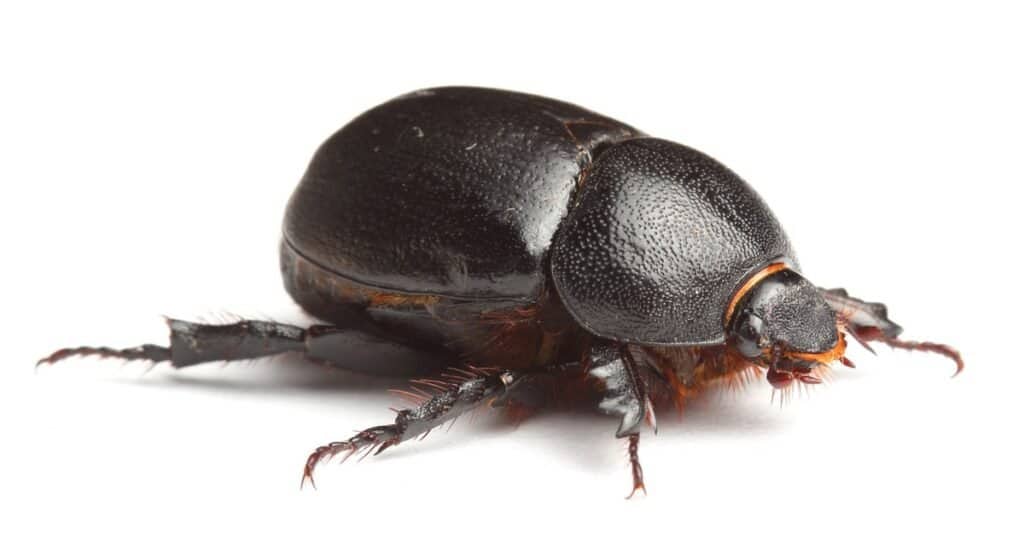
Dung beetles may have existed as far back as 145 million years ago!
©Vitalii Hulai/Shutterstock.com
Normally, researchers find it difficult to date the origins of insects since they lack bones and don’t usually leave behind a fossil record. Thankfully, the eating habits of dung beetles make them ripe for paleontological research. Namely, dung beetles occasionally died inside the dung of dinosaurs or other ancient animals. This feces would sometimes get fossilized, thereby preserving the remains of the dung beetle inside.
Due to these ancient feces fossils, scientists now estimate that dung beetles lived side-by-side with dinosaurs. Fossil evidence suggests ancient dung beetles existed during the Lower Cretaceous period. This means that dung beetles may have existed as far back as 145 million years ago.
3. Dung Beetles Help the Environment
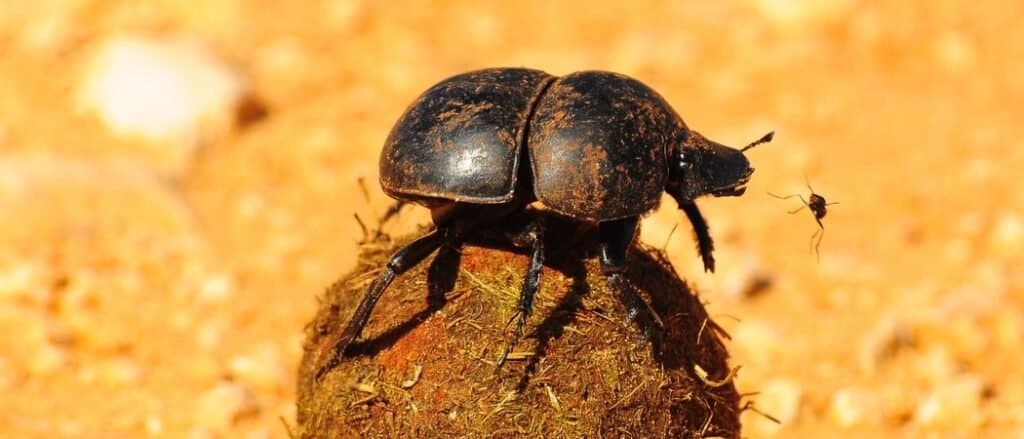
Dung beetles help the environment by eating and burying feces.
©Michael Potter11/Shutterstock.com
Beyond the obvious benefit that dung beetles provide by eating other animals’ waste, dung beetles help the environment in a number of surprising ways. Tunneling dung beetles bury the poop that they find. This process of aerating, burying and mixing the feces with the soil acts as a form of natural fertilization. In turn, this helps to reduce greenhouse gas emissions, particularly methane, as is common in the waste of cows. Some studies also suggest that dung beetles help to lower the populations of disease-carrying flies, as the flies have fewer food sources to live on.
2. Dung Beetles Will Travel Long Distances For Poop
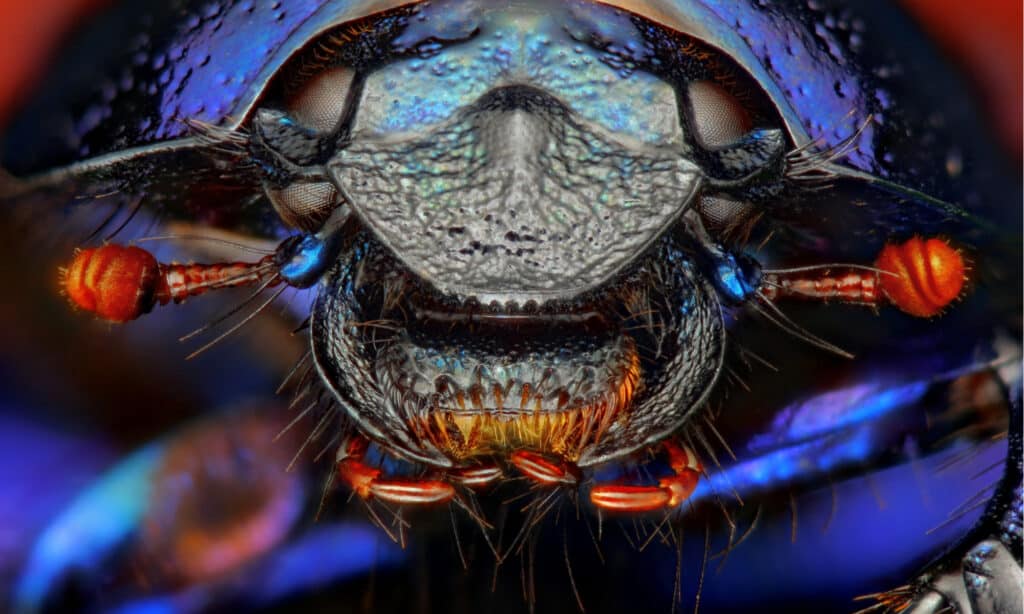
Close up of the dung beetle.
©Tomatito/Shutterstock.com
Despite their reputation, in reality, dung beetles can be extremely picky eaters. They prefer to eat fresh feces and readily ignore dried-out feces in favor of more palatable poop. As a result, they sometimes have to travel long distances to find a suitable meal.
Dung beetles possess an excellent sense of smell. While some species take shortcuts and simply wait for nearby animals to provide them with a meal, others make long treks to find just the right poop. This means that some dung beetles may have to fly for miles before they find a suitable pile of feces. They may then have to roll the meal all the way back to their den, a journey that can potentially take hours or even days.
1. Some Dung Beetles Are Endangered
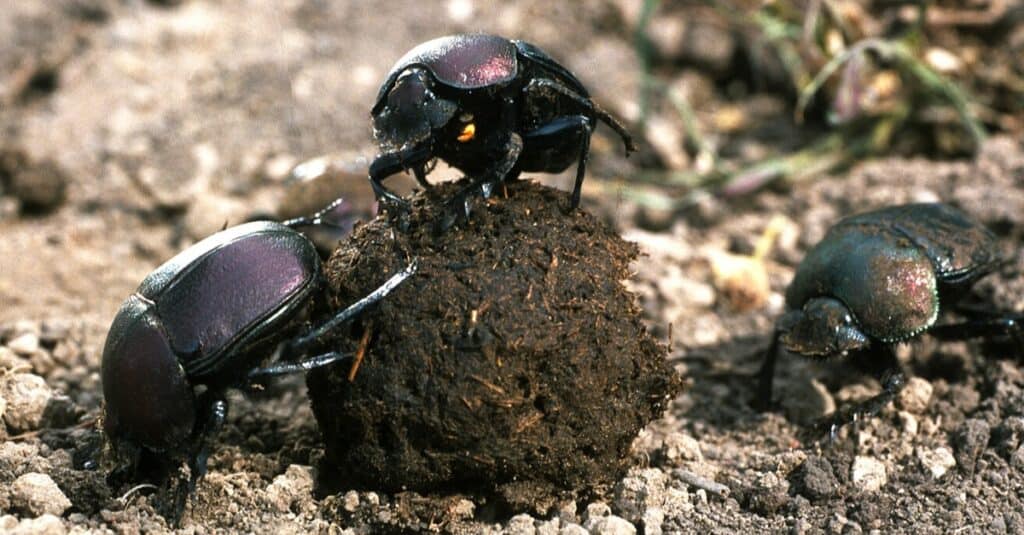
Some dung beetles are endangered due to habitat loss and human interference.
©Neil Bromhall/Shutterstock.com
Our last entry in our list of dung beetle facts is also one of the saddest. Like most animals, dung beetles face unique threats that threaten their existence. Some species face run-of-the-mill threats such as deforestation or habitat loss brought on by farming or tourism. Others face more unique threats. For example, one species in Japan, Cheirotonus jambar, is threatened because it is often collected for use in specialized gifts or trinkets. As a result, the IUCN has listed it as an Endangered species.
The photo featured at the top of this post is © Villiers Steyn/Shutterstock.com
Thank you for reading! Have some feedback for us? Contact the AZ Animals editorial team.



